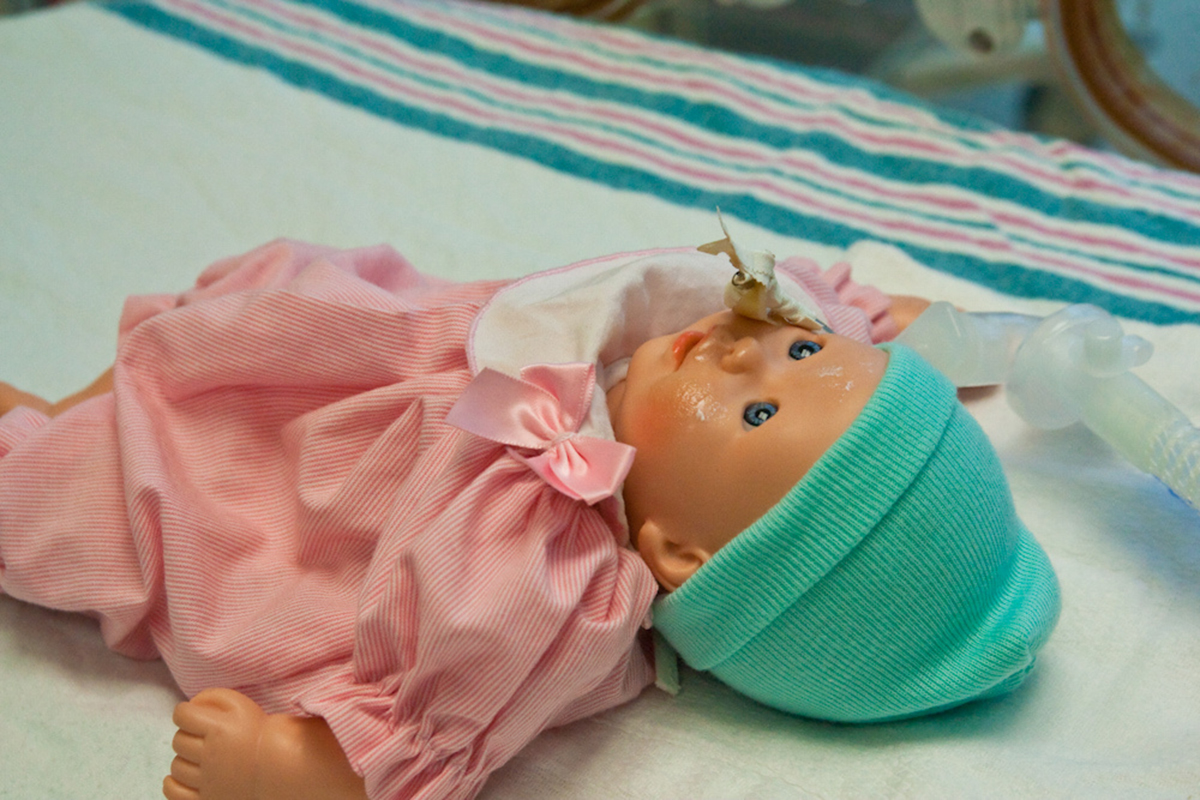
What Causes Hirschsprung’s Disease?
Under normal physiological conditions, the smooth muscles present in the walls of the bowel exhibit systematic contraction and relaxation. This is governed primarily by nervous regulation, and helps move digested food and feces smoothly along the gut.
This segment is usually at the end of the colon, thus affecting the sigmoid colon (last segment of colon) and rectum (stores stool prior to defecation).
Due to this permanent contraction, the lumen is narrowed, and stool becomes stuck in that particular portion, leading to an obstruction. This may cause bacterial infections to develop and even perforation (a hole) in the bowel.
Who is at Risk?
Hirschsprung's disease is often diagnosed in about 25% of all newborns, in which immediate surgery is needed. It is more common in males as compared to females.
Certain genetic or congenital conditions have also been identified that may make a person more susceptible to Hirschsprung's. The chances of having a child with the disease increases if either of the parents has it, and this chance is even higher if the mother has the disease.
Signs and Symptoms of Hirschsprung's?
The signs and symptoms vary according to the severity of the disease. One of the most common indications in newborns is the inability to pass meconium - dark, tar-like stool that babies pass within 48 hours of birth. 80% of children suffering from Hirschsprung’s exhibit symptoms within the first 6 weeks of birth; those with a minor segment blockage may remain asymptomatic for up to several months or even years.
Some of the most common symptoms that develop gradually include:
- Prominent swelling of the abdomen
- Vomiting
- Fever
Children who develop late symptoms may suffer from the following:
- Sepsis
- Watery stools in small quantities
- Loss of appetite and Malnutrition
- Fecal impaction and Constipation
- Retarded growth
How is the Condition Diagnosed?
- Physical Examination: This is determined by the age at which symptoms manifest, as well as their severity.
- Diagnostic Tests: In order to confirm the diagnosis, certain in-depth diagnostic testing may be required. This usually includes the following tests:
Abdominal X-ray
This is not a definitive diagnostic test, but it is used to detect the location of the blockage.
Contrast Enema
This is a very useful radiologic procedure used to examine the colon for any abnormalities. A contrast agent is given into the rectum. This agent coats the inside of organs thus inhibiting them from appearing in an X-ray.
Rectal Biopsy - Diagnostic
A sample of cells retrieved from the rectum is observed under a microscope. If an absence of ganglion cells is detected, along with the presence of non-myelinated nerves, Hirschsprung’s is confirmed.
Suction and Surgical Biopsy
Suction biopsy is done in the case of infants and is painless. However, if the results are inconclusive, a surgical biopsy under general anesthesia must be performed.
See Also: What Is Constipation In Children?
Anorectal Manometry
This method determines the presence of any normal reflexes that may be present in the movements of the muscles of the rectum and anus. It is only done in older children, never in the newborns.
Hirschsprung’s Disease Requires Immediate Surgery

Before the surgery, regular bowel washout is required. This involves inserting a thin tube into their bottom, through which slightly warm salt-water is passed. This helps in softening and flushing out the entrapped stool. This procedure is similar to enema.
How is the Surgery Performed?
If the child is well enough to undergo a single major surgery, the standard procedure is performed. However, if the child is not in a position to undergo a major surgical operation, the surgery is done in two steps.
Standard Procedure
The standard procedure is termed as the “pull-through” operation. This is performed by removing the affected segment of the bowel and directly connecting the healthy segment to the anus.
Two-step Surgery
This involves detaching the bowel and re-routing it through an opening in the stomach, known as a ‘stoma’. Stools pass out of the stoma directly into a pouch that is attached outside the child’s body.
During the main procedure, the bowel is reattached. If the small intestine is detached from the colon and is re-routed, the procedure is known as an “ileostomy”. However, if the colon is diverted, the name given to the procedure is “acolostomy”.
The main surgery (removing the diseased bowel) may be done via two methods:
- Laparoscopic (keyhole) surgery - minimally invasive, giving many small incisions in the abdomen through which surgical instruments and a laparoscope (flexible tube with camera attached to external monitor) are inserted.
- Open Surgery - larger incision given in the abdomen and the diseases area is operated.
Recovery from Surgery
After the surgery, pain-relieving medication is administered to the child orally or via a drip. An intravenous (IV) supply of fluids is given for the first few days, since the bowel will not be able to manage solid foods right away. No specific dietary precautions are needed; however a regular and plentiful intake of fluids is advised.
Once the child has fully recovered, the bowel will have completely healed and resumed its functioning. Some pain or soreness may be experienced for a few weeks while passing stool.
Are there any Risks from the Surgery?
Every surgical procedure has some risks. The risks involved in this surgery include:
- Bleeding (during or after the procedure).
- Fibrosis (thickening) of the area where the healthy bowels are connected.
- Leaking of bowel contents inside or outside of the child’s body, causing serious infections.
See Also: Hemorrhoids: A Pain In The Butt
What are the Possible Complications?
Certain complications that may develop after the procedure are:
- Constipation - for which dietary changes and laxatives are prescribed.
- Bowel incontinence (leaking stools) - which may even prevail during teenage years.
- Loss of sodium as a result of the Ileostomy - oral supplements may be prescribed.
- Enterocolitis (serious bowel infection) - Symptoms include fever and rectal bleeding. Urgent treatment and antibiotics is required.
- Photo courtesy of Phalinn by Flickr: www.flickr.com/photos/phalinn/8116068318
- Photo courtesy of Steven de Polo by Flickr: www.flickr.com/photos/stevendepolo/5232122490


Your thoughts on this